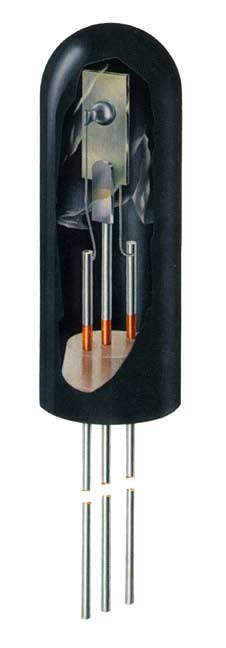

↑ 【Electrotechnical Laboratory】 ETL Mark III Transistor-Based Computer, Information Processing Society of Japan.↑ 6.0 6.1 6.2 Early Computers, Information Processing Society of Japan.Communications of the ACM (ACM) 4 (6): 256–265. "The state of digital computer technology in Europe". ↑ 4.0 4.1 Martin Fransman (1993), The Market and Beyond: Cooperation and Competition in Information Technology, page 19, Cambridge University Press.

↑ 3.0 3.1 1953 - Transistorized Computers Emerge, Computer History Museum.

Engineering and Science Education Journal (London, UK: IEE) 7 (3): 100–106. "Some early transistor applications in the UK.". Anderson, Tom Kilburn: A Pioneer of Computer Design, IEEE Annals of the History of Computing - Volume 31, Number 2, April–June 2009, p. So, second and third generation computer design (transistors and SSI) were perhaps the best suited to being undertaken by schools and hobbyists. The fourth generation (VLSI) was also largely out of reach, too, due to most of the design work being inside the integrated circuit package (though this barrier, too, was later removed ). Schools and hobbyists įirst generation computers were largely out of reach of schools and hobbyists who wished to build their own, largely because of the cost of the large number of vacuum tubes required (though relay-based computer projects were undertaken ). A modified version, the ETL Mark IV A, was introduced in 1958, as a fully transistorized computer with magnetic-core memory and an index register. The ETL Mark III's successor, the ETL Mark IV, began development in 1956 and was completed in 1957. It was also the first transistorized computer in Asia. It was the first transistorized stored-program computer, and used ultrasonic delay line memory. It was created by the Electrotechnical Laboratory, with design finished in March 1956, followed by fabrication in April and operation beginning in July. In Japan, the ETL Mark III began development as a transistorized computer in 1954, and was completed in 1956. The ETL Mark III and DRTE were the first transistorized computers in Asia and mainland Europe, respectively.įirst transistorized stored-program computer In Austria, the Mailüfterl was completed in May 1958. In Canada, the DRTE Computer was completed in 1957. The production version was known as the Metrovick 950 and was built from 1956 to the extent of six or seven machines, which were "used commercially within the company" or "mainly for internal use". The design of a full-size Transistor Computer was subsequently adopted by the Manchester firm of Metropolitan-Vickers, who changed all the circuits to more reliable types of junction transistors. The Computer also used a small number of tubes in its clock generator, so it was not the first fully transistorized machine.
First transistor free#
There were considerable reliability problems with the early batches of transistors and the average error free run in 1955 was only 1.5 hours. The 1955 machine had a total of 200 point-contact transistors and 1300 point diodes, which resulted in a power consumption of 150 watts. The 1953 machine had 92 point-contact transistors and 550 diodes, manufactured by STC. There were two versions of the Transistor Computer, the prototype, operational in 1953, and the full-size version, commissioned in April 1955. The University of Manchester's experimental Transistor Computer was first operational in November 1953 and it is widely believed to be the first transistor computer to come into operation anywhere in the world.


 0 kommentar(er)
0 kommentar(er)
